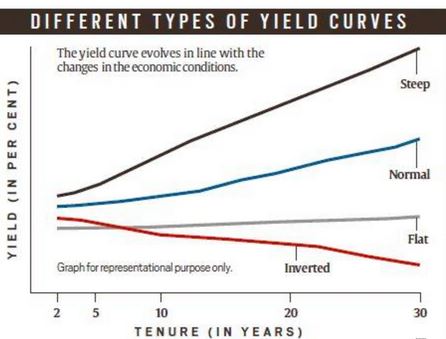ForumIAS announcing GS Foundation Program for UPSC CSE 2025-26 from 19 April. Click Here for more information.
ForumIAS Answer Writing Focus Group (AWFG) for Mains 2024 commencing from 24th June 2024. The Entrance Test for the program will be held on 28th April 2024 at 9 AM. To know more about the program visit: https://forumias.com/blog/awfg2024
Contents
Source: The post is based on the article “Yield inversion, soft-landing and reverse currency wars: A glossary for the troubled global economy” published in Indian Express on 18th July 2022.
What is the News?
The US Central Bank has been increasing the interest rates. Moreover, the inflation rate in the US for June came in at 9.1%. This is the highest in 40 years in the US.
Many observers have pointed to an inversion of the US yield curve to argue that the US central bank will not be able to achieve a soft-landing for the economy.
Similarly, the policies of other central banks are being seen as a reverse currency war situation.
What is the Yield Curve?
The yield curve is the graphical representation of yields from bonds (with an equal credit rating) over different time horizons.
Different Types of Yield Curves

Under normal circumstances, any economy would have an upward sloping yield curve. That is to say, as one lends for a longer duration — or as one buys bonds of longer tenure — one gets higher yields. Moreover, a longer tenure also implies that there is a greater risk of failure.
Inverted Yield Curve: There are times when this bond yield curve becomes inverted. For instance, bonds with a tenure of 2 years end up paying out higher yields (returns/ interest rate) than bonds with a 10-year tenure. Such an inversion of the yield curve essentially suggests that investors expect future growth to be weak.
Why does the inversion of the Yield Curve happen?
When investors feel buoyant about the economy they pull the money out from long-term bonds and put it in short-term riskier assets such as stock markets. Due to this, the prices of long-term bonds fall, and their yield (effective interest rate) rises. This happens because bond prices and bond yields are inversely related.
However, when investors suspect that the economy is heading for trouble, they pull out money from short-term risky assets (such as stock markets) and put them in long-term bonds. This causes the prices of long-term bonds to rise and their yields to fall.
Significance of Inversion Yield Curve: Inversion of the bond yield curve has become a strong predictor of recessions if such an inversion lasts for several months.
What is Soft Landing and hard landing?
Currently, the US Fed is not just reducing the money supply but also increases the cost of money (that is, the interest rate). The Fed is doing this to contain soaring inflation.
When a central bank is successful in slowing down the economy without bringing about a recession, it is called soft-landing — that is, no one gets hurt. But when the actions of the central bank bring about a recession, it is called hard-landing.
What is the Currency War?
US Fed is aggressively raising interest rates, thus more investors are rushing to invest money in the US. This, in turn, has made the dollar become stronger than all the other currencies.
On the face of it, this should make all other countries happier because a relative weakness of their local currency against the dollar makes their exports more competitive. In fact, in the past, the US has often accused other countries of manipulating their currency (and keeping it weaker against the dollar) just to enjoy a trade surplus against the US. This used to be called the Currency War.
What is the Reverse Currency War?
It is a situation in which countries are trying to make their currency stronger.
For instance, currently, every central bank is trying to figure out ways to counter the US Fed and raise interest rates themselves in order to ensure their currency doesn’t lose too much value against the dollar.
Note: Stronger currency means that imports are relatively cheaper.
However, raising the interest rate will decrease the chances of soft-landing for any other economy.




